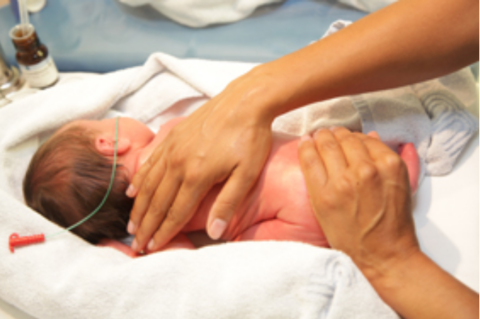Skin protection for premature babies
The skin serves as a protective element and must be protected if all functions are to be preserved. It is the largest organ in the human body and has a number of important tasks to fulfill. As a barrier, it protects against infections, dirt, chemical substances, UV radiation and mechanical stress. It serves to regulate temperature, has an insulating function, regulates the water and electrolyte balance and acts as a tactile organ.
The biggest problem with the skin of a premature baby is its immaturity. The epidermis, which acts as a “protective sheath” against the environment, is significantly thinner than in mature skin. The structures are unstable and there is, for example, a nutritional zinc deficiency. It is therefore particularly important to protect the skin of premature babies during their development and to maintain skin integrity.
Skin assessment score (risk assessment)
In order to initiate precautionary measures quickly, practitioners need a reliable assessment tool. We use the skin assessment score (SNSS2) to evaluate dryness, redness and any skin lesions. In addition, points are awarded for skin maturity, analogous to the weeks of pregnancy. Individual care planning is also carried out for certain scores. This systematic risk assessment of the premature infant’s skin is carried out as standard and is discussed during medical rounds. Changes in the condition of the skin are recognized and preventive and therapeutic treatments are initiated.
Treatment methods
We use evidence-based methods such as sunflower oil therapy, reduced use of plaster products and bath washing practices as well as moisture management in the incubator.
Oil and emulsion therapy
We are currently protecting and caring for premature babies’ skin with sunflower oil. Since the successful introduction of the guideline “Skin protection and skin care for premature babies <32 weeks of pregnancy” (2010) in the NICUs in Basel, Bern and Zurich, no increase in the infection rate associated with sunflower oil has been observed in these clinics. The evidence of the care products used on the immature skin of the premature infant is continuously reviewed.

Skin protection dressings and plaster products
Various skin protection dressings and plaster products are used to fix life-supporting and life-monitoring sensors and catheters to the skin. Due to the dermal instability, the risk of injury is particularly high when removing these materials. With the correct selection and application of these plaster products, we prevent possible skin irritation and skin injuries.
Bathing/washing practice
Until now, children were bathed/washed daily for hygienic reasons and to increase the child’s supposed well-being. However, various study results do not confirm these statements. The bacterial colonization does not increase, even if the cleaning interval is extended to 4 days.
In order to avoid stress for the child, we take the physiological constitution and psychomotor behavior of the premature baby into account when planning bathing/washing.
Moisture
In extremely small premature babies, fluid loss through the skin (transepidermal water loss, or TEWL) can lead to serious symptoms such as dehydration, electrolyte imbalance and temperature instability and thus to serious complications. The most important factor influencing the TEWL is the relative humidity of the ambient air, especially in the first few days of life. It is therefore very important for premature babies to stay in a properly humidified and warm double-walled incubator.
